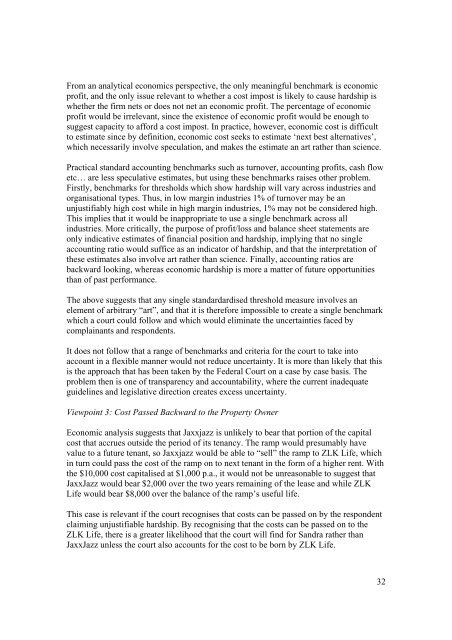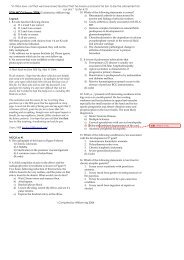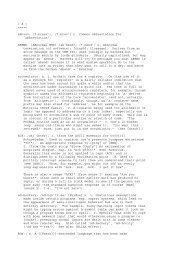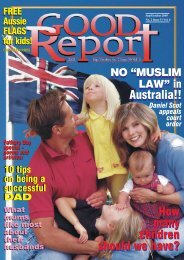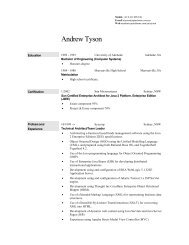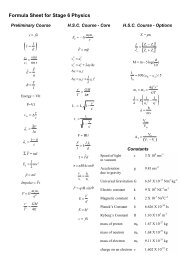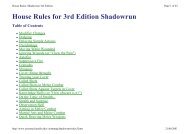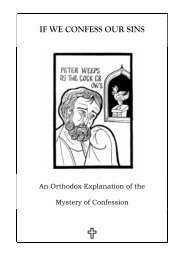Notes to Submission to the Productivity Commission Inquiry into the ...
Notes to Submission to the Productivity Commission Inquiry into the ...
Notes to Submission to the Productivity Commission Inquiry into the ...
Create successful ePaper yourself
Turn your PDF publications into a flip-book with our unique Google optimized e-Paper software.
From an analytical economics perspective, <strong>the</strong> only meaningful benchmark is economicprofit, and <strong>the</strong> only issue relevant <strong>to</strong> whe<strong>the</strong>r a cost impost is likely <strong>to</strong> cause hardship iswhe<strong>the</strong>r <strong>the</strong> firm nets or does not net an economic profit. The percentage of economicprofit would be irrelevant, since <strong>the</strong> existence of economic profit would be enough <strong>to</strong>suggest capacity <strong>to</strong> afford a cost impost. In practice, however, economic cost is difficult<strong>to</strong> estimate since by definition, economic cost seeks <strong>to</strong> estimate ‘next best alternatives’,which necessarily involve speculation, and makes <strong>the</strong> estimate an art ra<strong>the</strong>r than science.Practical standard accounting benchmarks such as turnover, accounting profits, cash flowetc… are less speculative estimates, but using <strong>the</strong>se benchmarks raises o<strong>the</strong>r problem.Firstly, benchmarks for thresholds which show hardship will vary across industries andorganisational types. Thus, in low margin industries 1% of turnover may be anunjustifiably high cost while in high margin industries, 1% may not be considered high.This implies that it would be inappropriate <strong>to</strong> use a single benchmark across allindustries. More critically, <strong>the</strong> purpose of profit/loss and balance sheet statements areonly indicative estimates of financial position and hardship, implying that no singleaccounting ratio would suffice as an indica<strong>to</strong>r of hardship, and that <strong>the</strong> interpretation of<strong>the</strong>se estimates also involve art ra<strong>the</strong>r than science. Finally, accounting ratios arebackward looking, whereas economic hardship is more a matter of future opportunitiesthan of past performance.The above suggests that any single standardardised threshold measure involves anelement of arbitrary “art”, and that it is <strong>the</strong>refore impossible <strong>to</strong> create a single benchmarkwhich a court could follow and which would eliminate <strong>the</strong> uncertainties faced bycomplainants and respondents.It does not follow that a range of benchmarks and criteria for <strong>the</strong> court <strong>to</strong> take in<strong>to</strong>account in a flexible manner would not reduce uncertainty. It is more than likely that thisis <strong>the</strong> approach that has been taken by <strong>the</strong> Federal Court on a case by case basis. Theproblem <strong>the</strong>n is one of transparency and accountability, where <strong>the</strong> current inadequateguidelines and legislative direction creates excess uncertainty.Viewpoint 3: Cost Passed Backward <strong>to</strong> <strong>the</strong> Property OwnerEconomic analysis suggests that Jaxxjazz is unlikely <strong>to</strong> bear that portion of <strong>the</strong> capitalcost that accrues outside <strong>the</strong> period of its tenancy. The ramp would presumably havevalue <strong>to</strong> a future tenant, so Jaxxjazz would be able <strong>to</strong> “sell” <strong>the</strong> ramp <strong>to</strong> ZLK Life, whichin turn could pass <strong>the</strong> cost of <strong>the</strong> ramp on <strong>to</strong> next tenant in <strong>the</strong> form of a higher rent. With<strong>the</strong> $10,000 cost capitalised at $1,000 p.a., it would not be unreasonable <strong>to</strong> suggest thatJaxxJazz would bear $2,000 over <strong>the</strong> two years remaining of <strong>the</strong> lease and while ZLKLife would bear $8,000 over <strong>the</strong> balance of <strong>the</strong> ramp’s useful life.This case is relevant if <strong>the</strong> court recognises that costs can be passed on by <strong>the</strong> respondentclaiming unjustifiable hardship. By recognising that <strong>the</strong> costs can be passed on <strong>to</strong> <strong>the</strong>ZLK Life, <strong>the</strong>re is a greater likelihood that <strong>the</strong> court will find for Sandra ra<strong>the</strong>r thanJaxxJazz unless <strong>the</strong> court also accounts for <strong>the</strong> cost <strong>to</strong> be born by ZLK Life.32


